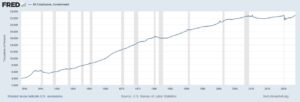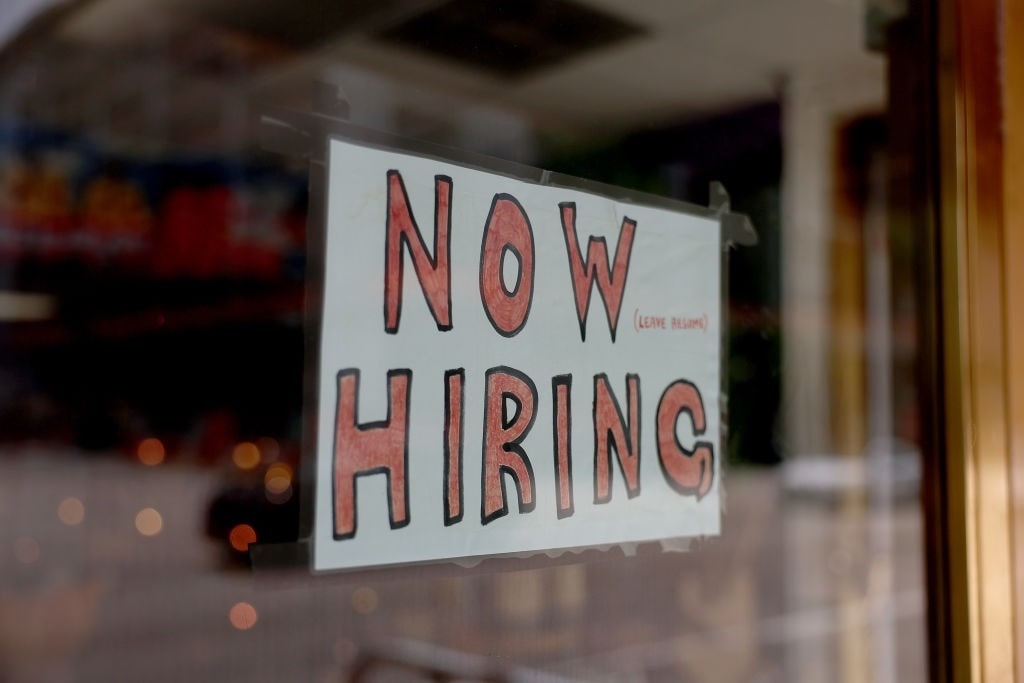Uncle Sam is hiring. Oh, you didn’t know? The September Jobs report clarified again that the government – federal, state, and local – has been the largest employment creator this year. When the Leviathan is spending nearly $7 trillion a year, it is inevitable that the public sector will exceed the private marketplace, from leisure and hospitality to manufacturing. But is this sustainable? It does not matter because, as the long-term data show, the government only grows over time. It is Swamponomics 101.
Primer: September Jobs Report
Last month, the US economy created an astounding 336,000 new jobs, up from an already upwardly revised 227,000 in August, according to the Bureau of Labor Statistics. This is close to double economists’ expectations of 170,000. The unemployment rate was unchanged at 3.8%, slightly higher than the consensus estimate of 3.7%. The U-6 jobless rate, which measures people who want to work but have given up searching and individuals working part-time but cannot find full-time work, slid to 7%. Average hourly earnings dipped by 4.2% year-over-year, the labor force participation rate was flat at 62.8%, and average weekly hours were sideways at 34.4. A total of 22,000 full-time jobs were shed, while part-time payrolls ballooned by 151,000.
Perpetual Public Works Projects
The September jobs report revealed that government payrolls spiked by 73,000, including a 29,000 boost in state government education and 27,000 in local government. Officially, Uncle Sam was second behind leisure and hospitality, an industry that bolstered employment levels by 96,000. However, since health care and social assistance, which each produced 41,000 and 25,000 new positions, respectively, are interconnected to the state, the government accounted for a third of the new jobs last month.
In the first nine months of 2023, government payrolls advanced by more than 400,000, representing 22% of the roughly 1.876 million new jobs created this year. Of course, this figure is much higher when health care and social assistance are added to the formula. But, even without these factors, having the government accounting for nearly one-quarter of all payroll growth is still an incredible feat.
 Considering the size and scope of the federal government, are the numbers surprising? President Joe Biden has unleashed trillions of dollars in new spending, from the touted bipartisan infrastructure law to the Inflation Reduction Act. In addition, as government spending has continued on an upward trajectory for decades, so has public sector employment. Aside from some brief periods of drops since the Second World War, the behemoth has skyrocketed.
Considering the size and scope of the federal government, are the numbers surprising? President Joe Biden has unleashed trillions of dollars in new spending, from the touted bipartisan infrastructure law to the Inflation Reduction Act. In addition, as government spending has continued on an upward trajectory for decades, so has public sector employment. Aside from some brief periods of drops since the Second World War, the behemoth has skyrocketed.
Are Government Jobs Productive?
In the 1952 Japanese film, Ikiru, the main character, Kanji Watanabe, spends his life filing paperwork. It is not until he learns that he has terminal cancer that he attempts to turn his life around by bringing happiness to others. It illustrates the futility of man’s existence, and the picture further reveals the emptiness and lack of purpose of many government employment opportunities. Unfortunately, the need to keep millions employed in unproductive roles weighs on the broader economy.
Yes, government jobs drain resources from the private sector. This is an issue, but the other problem is that capital extraction from the real economy does not lead to new goods or services for businesses or consumers. Whether politicians or administrative clerks, civil servants do not possess market functions.
 The recent battle in Congress illustrates this point. Former House Speaker Kevin McCarthy (R-CA) has spent much of his time trying to keep his speakership. Has this contributed to the gross domestic product or gross domestic income? Has this facilitated an environment of productivity and innovation? Ditto for House Minority Leader Hakeem Jeffries (D-NY), who has only engaged in political theater and has not been a productive member of society by adding to economic ingenuity. Have the longtime elected representatives, from Rep. Nancy Pelosi (D-CA) to Sen Chuck Grassley (R-IA), created wealth for anyone but themselves?
The recent battle in Congress illustrates this point. Former House Speaker Kevin McCarthy (R-CA) has spent much of his time trying to keep his speakership. Has this contributed to the gross domestic product or gross domestic income? Has this facilitated an environment of productivity and innovation? Ditto for House Minority Leader Hakeem Jeffries (D-NY), who has only engaged in political theater and has not been a productive member of society by adding to economic ingenuity. Have the longtime elected representatives, from Rep. Nancy Pelosi (D-CA) to Sen Chuck Grassley (R-IA), created wealth for anyone but themselves?
Swamponomics
Comparable to economist Milton Friedman’s four ways to spend money, the idea of government jobs can be broken down in this way: Washington hires politicians, governments tax citizens to pay for the politicians, the population has fewer savings due to taxation, and the public has less capital to invest in the economy. Indeed, it is a transfer of wealth from John Smith and Jane Doe to the government.
Public works projects are not only Bidenomics 101 – they are Swamponomics 101. What is the difference between a regulator ensuring a farmer pays attention to federal rule 323.b on page eight of the Food and Drug Administration’s (FDA) handbook and someone who is paid to dig a hole and refill it five days a week?




